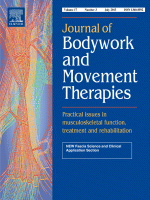
Spine
Trigger point dry needling with and without neuroscience education for patients with cLBP
This report has been verified
by one or more authors of the
original publication.
J Bodyw Mov Ther. 2015 Jul;19(3):464-72
12 patients diagnosed with low back pain (LBP) and active trigger points were randomized to either trigger point dry needling (TrP-DN) with or without the addition of neuroscience education sessions (EDU). Intervention was provided over 3 weeks, with follow-up of outcomes of pain, disability, kinesiophobia, and pressure pain threshold performed at 1 week post-intervention. Results demonstrated no significant differences between groups in the degree of improvement of pain or disability outcomes. The TrP-DN+EDU group demonstrated significantly greater reduction in the Tampa Scale of Kinesiophobia compared to the TrP-DN alone group. The TrP-DN+EDU also demonstrated significantly greater increase in PPT at the L3 transverse process compared to the TrP-DN alone group, but not at any other site evaluated.
Unlock the full article
Get unlimited access to OrthoEvidence with a free trial
Start TrialCritical appraisals of the latest, high-impact randomized controlled trials and systematic reviews in orthopaedics
Access to OrthoEvidence podcast content, including collaborations with the Journal of Bone and Joint Surgery, interviews with internationally recognized surgeons, and roundtable discussions on orthopaedic news and topics
Subscription to The Pulse, a twice-weekly evidence-based newsletter designed to help you make better clinical decisions
Exclusive access to original content articles, including in-house systematic reviews, and articles on health research methods and hot orthopaedic topics
Or continue reading this full article
Register Now

Subscribe to "The Pulse"
Evidence-Based Orthopaedics direct to your inbox.





































